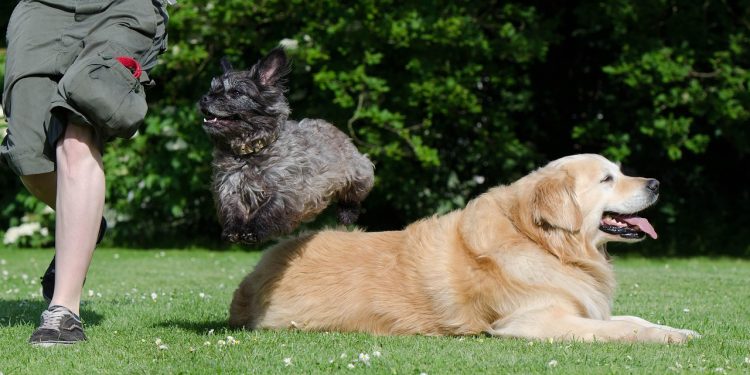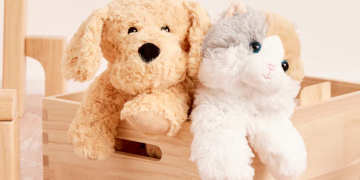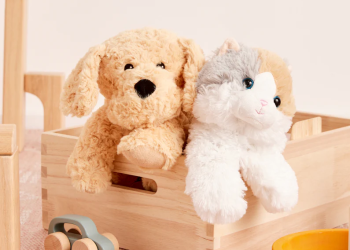Teaching tricks to your pet is a fun and rewarding way to bond while keeping their mind sharp and body active. Whether you have a young puppy, an adult cat, or even a senior rabbit, pets of all ages can learn new tricks with the right approach. Here’s a comprehensive guide to teaching tricks to your pet at any stage of life.
Why Teach Tricks?
Mental Stimulation
Learning new tricks engages your pet’s brain, keeping them mentally stimulated and reducing boredom.
Physical Exercise
Many tricks, such as spinning or jumping, encourage movement, which is great for your pet’s physical health.
Strengthening the Bond
Training sessions build trust and communication, deepening your relationship with your pet.
Boosting Confidence
Mastering new skills can make your pet feel more confident and content.
General Principles for Teaching Tricks
Use Positive Reinforcement
- Reward your pet with treats, praise, or toys immediately after they perform the desired behavior.
- Positive reinforcement creates a fun and stress-free learning environment.
Be Patient and Consistent
- Pets learn at different paces. Stay patient and practice regularly.
- Consistency is key—use the same cues and rewards every time.
Keep Sessions Short
- Limit training sessions to 5–10 minutes to prevent fatigue or frustration.
- Multiple short sessions throughout the day are more effective than one long session.
Use a Marker
- A clicker or verbal marker like “yes” helps your pet understand exactly when they’ve performed the correct behavior.
Preparing for Training
Gather Supplies
- High-value treats, such as small pieces of chicken or cheese, to motivate your pet.
- A clicker or verbal marker.
- A quiet, distraction-free environment.
Know Your Pet’s Limits
- Consider your pet’s physical abilities and avoid tricks that may cause discomfort or strain.
- Adjust your approach based on their age, breed, or species.
Teaching Basic Tricks
Sit
- Lure the Behavior: Hold a treat above your pet’s nose and move it back slightly. As they sit, say “sit.”
- Mark and Reward: Use your clicker or marker, then give the treat.
- Practice Regularly: Repeat until your pet associates the command with the action.
Shake Paw
- Start in a Sit Position: Ask your pet to sit.
- Introduce the Paw: Gently lift their paw while saying “shake.”
- Reward: Mark and treat them immediately.
- Repetition: Over time, wait for your pet to offer their paw voluntarily.
Lie Down
- Lure Downward: Hold a treat near your pet’s nose and slowly lower it to the ground.
- Add the Cue: Say “down” as they follow the treat.
- Reward Success: Mark and treat as soon as they lie down.
Intermediate Tricks
Spin
- Use a Treat: Hold a treat near your pet’s nose and guide them in a circle.
- Add the Cue: Say “spin” as they follow the treat.
- Reward Completion: Mark and reward after the full circle.
Roll Over
- Start in a Down Position: Ask your pet to lie down.
- Guide with a Treat: Move a treat over their shoulder to encourage them to roll onto their side and then onto their back.
- Add the Cue: Say “roll over” once they begin the motion.
- Reward Small Steps: Mark and treat each part of the roll.
Fetch
- Introduce the Object: Use a toy your pet likes and encourage them to take it.
- Encourage Return: Call your pet back and reward them for bringing the toy.
- Repeat and Reinforce: Practice throwing the toy short distances, rewarding successful fetches.
Advanced Tricks
Play Dead
- Start in a Down Position: Ask your pet to lie down.
- Guide to Their Side: Use a treat to lure their head to one side.
- Add the Cue: Say “play dead” or “bang” as they roll onto their side.
- Reward: Mark and treat when they stay in position.
Balance a Treat
- Start Calmly: Ask your pet to sit or lie down.
- Place the Treat: Gently place a treat on their nose or paw.
- Add a Cue: Say “wait” or “balance.”
- Reward Quickly: Mark and treat as soon as they stay still, gradually increasing the time.
Jump Through a Hoop
- Start Low: Hold a hoop close to the ground.
- Encourage Passing Through: Use a treat to guide your pet through the hoop.
- Raise the Hoop: Gradually increase the height as your pet gains confidence.
- Add the Cue: Say “jump” as they pass through.
Adapting Tricks for Different Ages
Puppies
- Puppies have short attention spans, so keep sessions brief and focus on basic tricks.
- Use gentle techniques to avoid overwhelming them.
Adult Pets
- Adults are more focused and can learn intermediate and advanced tricks.
- Introduce new challenges to keep them engaged.
Senior Pets
- Focus on tricks that suit their physical abilities, such as “shake” or “spin.”
- Keep sessions short and allow more rest between activities.
Troubleshooting Common Challenges
Lack of Focus
- Train in a quiet area with minimal distractions.
- Use high-value rewards to maintain their interest.
Slow Progress
- Break the trick into smaller steps and reward incremental improvements.
- Stay consistent and patient.
Resistance to Learning
- Ensure your pet is not tired, hungry, or stressed before training.
- Use more enticing rewards or incorporate play to make training fun.
Incorporating Tricks into Daily Life
- During Walks: Practice “sit” or “stay” at crosswalks.
- Playtime: Use “fetch” or “spin” as part of your pet’s exercise routine.
- Social Interactions: Show off tricks to guests for added mental stimulation.
When to Seek Professional Help
If your pet struggles with certain tricks or exhibits fear or aggression during training, consult a professional trainer or behaviorist. They can provide tailored guidance to suit your pet’s needs.
Teaching tricks to your pet at any age is a fulfilling journey that strengthens your bond and keeps your pet mentally and physically engaged. With patience, consistency, and plenty of positive reinforcement, your pet can learn and enjoy new skills for a lifetime.












